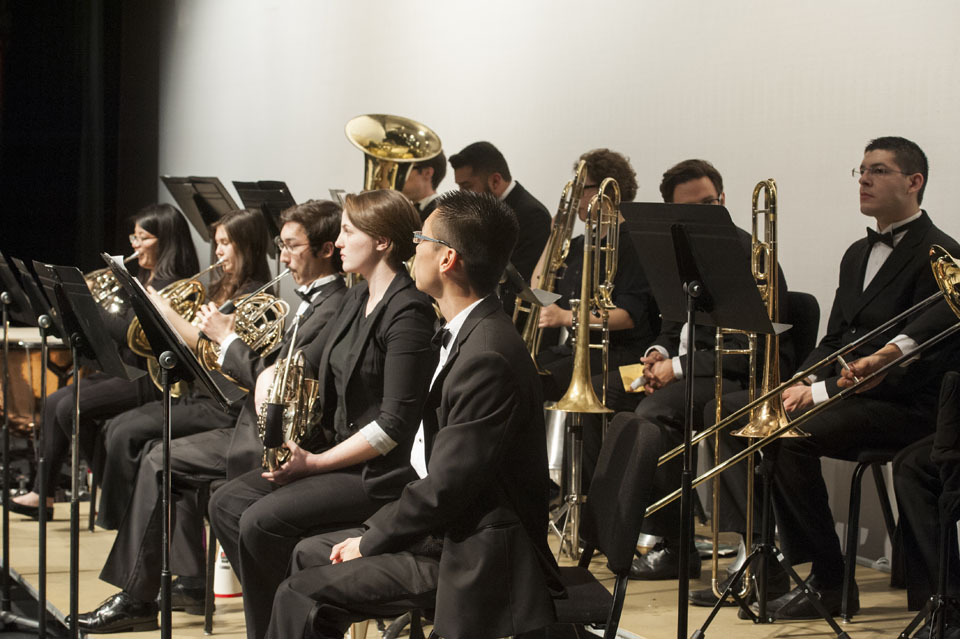Math Professor Tony Rowe Weaves a Symphony of Music and Numbers
California State University, Northridge music professor Lawrence Stoffel happened upon an odd CD in a bookstore more than two decades ago titled “Santa Claus Symphony.”
When Stoffel asked Hollywood composer and friend Charles “Chuck” Fernandez to transcribe the symphony by William Henry Fry for CSUN’s Wind Ensemble in 2012, he did not expect the big bonus that followed. A few weeks later, Fernandez walked in with a man that seemed strangely familiar to Stoffel.
“I’d like for you to meet someone,” Fernandez said. “I’d like for you to meet Tony Rowe.” Stoffel recognized his name, but couldn’t place him.
“Tony Rowe,” Fernandez emphasized.
Stoffel suddenly realized that standing before him was the only man in the world to ever conduct and record the “Santa Claus Symphony” with the Royal Scottish National Orchestra on the Naxos record label. Fernandez explained to his friend that Rowe had been teaching mathematics at CSUN since 2002.
“Here is the only recording ever made of this symphony, here is the man who conducted it — and he is a math faculty member here at CSUN,” Stoffel recalled of their meeting. “It was the most serendipitous moment that I can recall ever having in the middle of rehearsal!”
Rowe stepped in to guest-conduct the ensemble at that rehearsal — and astounded Stoffel with his skill.
“Rowe’s pedigree as an orchestral conductor and his several recordings with the Naxos label made it an enriching and insightful rehearsal,” he said.
It’s natural for musicians to also have a passion for mathematics, Stoffel said, since the two disciplines are intertwined in many respects.
Rowe received his bachelor’s degree in physics and mathematics from the University of Cambridge in England in 1983. While at Cambridge, Rowe also conducted, and his passion for math and music have stayed with him, he said.
“We have become specialized in our education,” Rowe said. “Historically, it was normal to study many disciplines.”
Stoffel said having an esteemed conductor like Rowe work with his students was also a great asset to their education.
“We provide students with a regular lineup of guest conductors from various backgrounds,” he said. “It’s important for students to work with a myriad of conductors. Most of the students in the wind ensemble are going to pursue professional careers as players.
“One of the necessary skills to succeed as a professional orchestral musician is being able to play under all the many different idiosyncrasies, quirks and temperaments that conductors have,” he continued. “There are so many different conducting styles. You must be able to be responsive, expressive, musical and technically proficient even when the conductor might be a total stranger to you.”
Stoffel invited Rowe to be a guest conductor for a CSUN Wind Ensemble concert in February 2015, giving the students an opportunity to work with a highly regarded conductor. Stoffel picked the “Second Suite in F for Military Band” by Gustav Holst for Rowe to conduct.
Practicing two things he’s passionate about, Rowe said — math and conducting — is a “blessing.”
“It’s twice as good to do two things you love,” Rowe said. “There is no reason why we shouldn’t take time to have more than one discipline that we love.”



 experience
experience